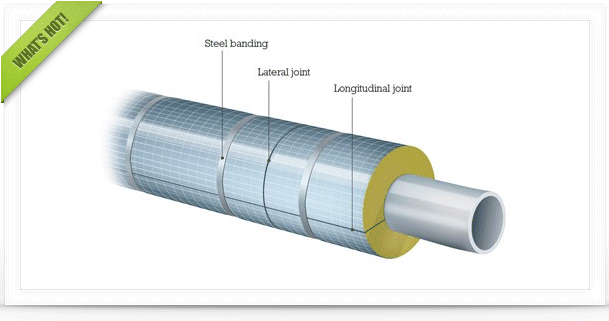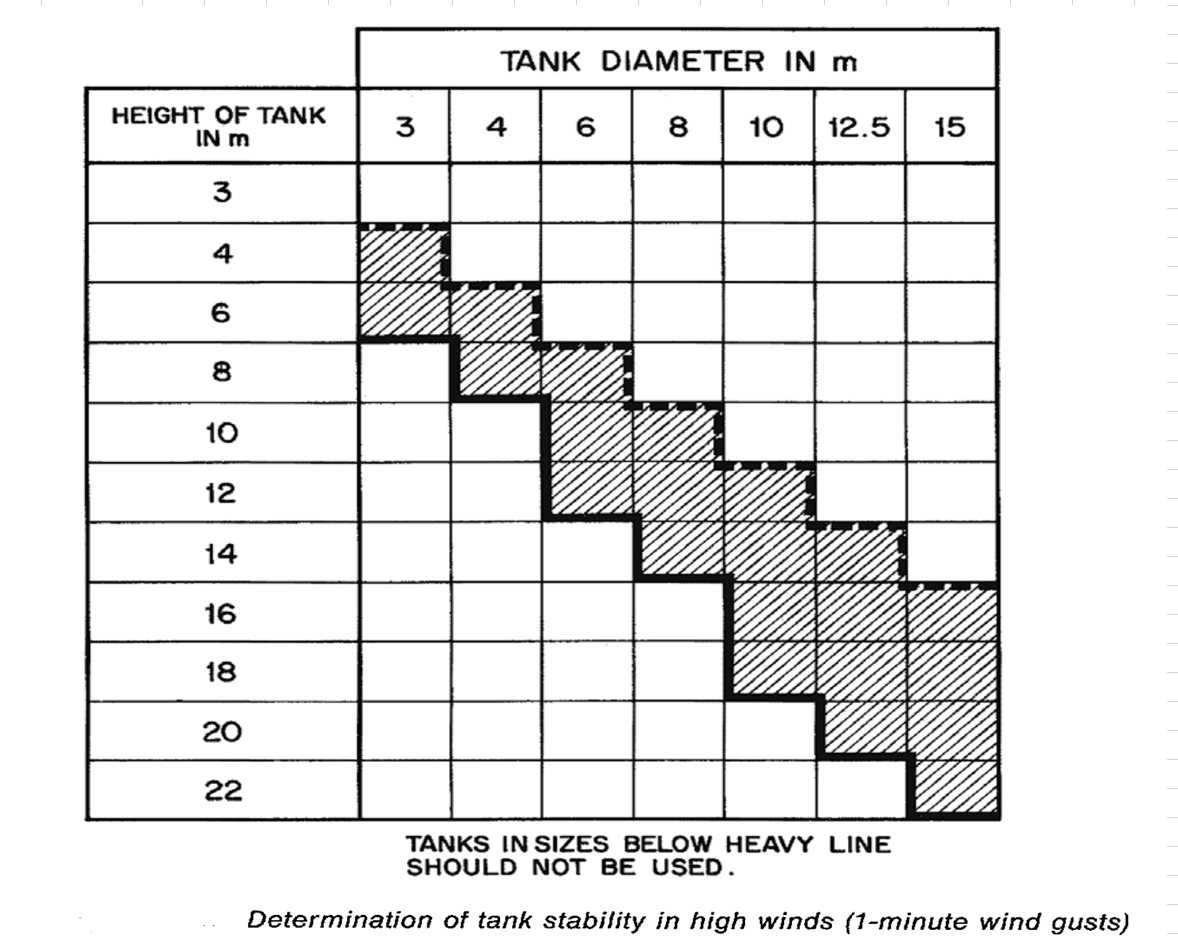|
|
Top Loading Arm Size And Static Electricity Generation
Started by venkatesh.b, Oct 08 2011 09:39 AM
7 replies to this topic
Share this topic:
#1

Posted 08 October 2011 - 09:39 AM
Sir,
We are designing the tank truck loading arm size for enhanced flow rate of 2400LPM (Service-Diesel).In this client asked us to check the static electricity generation for this flow rate in loading arm.
So Please guided me how to check this static electricity and how to design the proper loading arm size for that flowrate for tank truck loading.
We are designing the tank truck loading arm size for enhanced flow rate of 2400LPM (Service-Diesel).In this client asked us to check the static electricity generation for this flow rate in loading arm.
So Please guided me how to check this static electricity and how to design the proper loading arm size for that flowrate for tank truck loading.
#2

Posted 08 October 2011 - 10:27 PM
HI ,
Consider FMC technology for loading arm . A lot of info are available on the net.
http://www.arm-tex.c...ading-arms.html
Same resource for static electricity.
For static electricity you need to consider the nature of the product (resistivity) , velocity during unloading and the grounding system on the truck.
Hope this helps .
Breizh
Consider FMC technology for loading arm . A lot of info are available on the net.
http://www.arm-tex.c...ading-arms.html
Same resource for static electricity.
For static electricity you need to consider the nature of the product (resistivity) , velocity during unloading and the grounding system on the truck.
Hope this helps .
Breizh
Edited by breizh, 08 October 2011 - 10:30 PM.
#3

Posted 08 October 2011 - 10:54 PM
#4

Posted 10 October 2011 - 05:45 AM
Ankur Sir,
thanks for information.
But our client is asking the backup document for checking the static electricity.
So can u provide any standards references for that purpose.
thanks for information.
But our client is asking the backup document for checking the static electricity.
So can u provide any standards references for that purpose.
#5

Posted 10 October 2011 - 11:15 AM
Having read the interesting article on the subject by Ankur, the link of which is reported in his post, following notes may be useful.
1. If hydrocarbon liquid contains water, velocity in the transfer pipe should be less than 1 m/s (wikipedia). Local requirement is: exit velocity to an atmospheric tank should be less than 1 m/s, if air can contact the exit liquid (that is if inlet pipe is not below LLLL), with no relation to water (or sulphur) content of hydrocarbon. Pipe can have an enlarger at its connection to the tank in order to meet this requirement.
2. Flow rate of 144 m3/h (2400LPM) results in a velocity v=4.87 m/s in a 4" (Sch40) pipe. D*v = 0.1023*4.87 = 0.498, not higher than 0.5 m2/s, but velocity is higher than 1 m/s. On the other hand fuel discharged into a truck compartment cannot avoid contact with air at the beginning. To my understanding this is so, even for bottom truck loading. Yet 144 m3/h through 4" line into the truck is an approved (thus safe) practice. Any explanation would be highly appreciated.
3. It seems that the requirement of v<1 m/s is generally stricter than D*V<0.5 m2/s, but the first concerns only exit velocity. Diesel oil seems to be an accumulator (conductivity <50 pS/m). Assuming conductivity of 10 pS/m, static relaxation time is about 18/10=1.8 sec; this means that Diesel velocity has to be reduced below 1 m/s on the flow, at a moment of 5*1.8 = 9 sec before its exit to the tank (comments?). This does not seem to be taken into consideration here.
4. Note from wikipedia: Bounding (connecting two different metals electrically) and earthing make the usual way to prevent charge built up. These are not adequate for liquid conductivities <10 pS/m, when antistatic additives may be required.
1. If hydrocarbon liquid contains water, velocity in the transfer pipe should be less than 1 m/s (wikipedia). Local requirement is: exit velocity to an atmospheric tank should be less than 1 m/s, if air can contact the exit liquid (that is if inlet pipe is not below LLLL), with no relation to water (or sulphur) content of hydrocarbon. Pipe can have an enlarger at its connection to the tank in order to meet this requirement.
2. Flow rate of 144 m3/h (2400LPM) results in a velocity v=4.87 m/s in a 4" (Sch40) pipe. D*v = 0.1023*4.87 = 0.498, not higher than 0.5 m2/s, but velocity is higher than 1 m/s. On the other hand fuel discharged into a truck compartment cannot avoid contact with air at the beginning. To my understanding this is so, even for bottom truck loading. Yet 144 m3/h through 4" line into the truck is an approved (thus safe) practice. Any explanation would be highly appreciated.
3. It seems that the requirement of v<1 m/s is generally stricter than D*V<0.5 m2/s, but the first concerns only exit velocity. Diesel oil seems to be an accumulator (conductivity <50 pS/m). Assuming conductivity of 10 pS/m, static relaxation time is about 18/10=1.8 sec; this means that Diesel velocity has to be reduced below 1 m/s on the flow, at a moment of 5*1.8 = 9 sec before its exit to the tank (comments?). This does not seem to be taken into consideration here.
4. Note from wikipedia: Bounding (connecting two different metals electrically) and earthing make the usual way to prevent charge built up. These are not adequate for liquid conductivities <10 pS/m, when antistatic additives may be required.
Edited by kkala, 10 October 2011 - 11:34 AM.
#6

Posted 12 October 2011 - 12:50 AM
Dear Ankur and kkla sir,
I utilized your valuable information about static electricity and I gone through the OISD-110 and observed one table for conductivity values of petroleum products.(See attached sheet)
In my case HSD and MS are the products handling at 144 m3/hr for 4” loading arm.
My query is how to check the electrical conductivity range for these products using this table.
Please guided me sir because it’s very urgent for my client.
I utilized your valuable information about static electricity and I gone through the OISD-110 and observed one table for conductivity values of petroleum products.(See attached sheet)
In my case HSD and MS are the products handling at 144 m3/hr for 4” loading arm.
My query is how to check the electrical conductivity range for these products using this table.
Please guided me sir because it’s very urgent for my client.
Attached Files
#7

Posted 12 October 2011 - 05:30 AM
Post of 10-10-2011 by kkala places queries, unfotunately it does not give answers. Nevertheless following is noted in response to Venkatesh recent post.
1. HSD & MS are assumed to be high speed diesel and medium speed diesel. High speed diesel is used in gas turbines, so it must have less impurities, hence lower conductivity compared to MS diesel. I do not have a physical feeling to tell category of liquid per Table - I of OISD-110. It does not refer to fluids of conductivity between 10 and 150. Probably diesel belongs to "Light distillates from refinery operation" (even though heavier than Jet A-1) because of low conductivity. This assumption needs verification. Moreover there is some evidence that antistatic additives are used for diesel, http://www.med.govt....px#P2678_277412.
2. Conductivity (unit: Siemens, or ohm-1, or mho) is the inverse of resistance (unit: ohm). Here we mean specific conductivity, the inverse of specific resistance (unit: ohm*m). So the units of (specific) conductivity are ohm-1 *m-1, same as Siemens/m, or S/m ("Siemens" abbreviated). It seems that pS/m is the common unit nowadays, 1 S/m = 1E12 pS/m. It is noted that e.g. 1E4 means 104.
3. Half value time is approximated for hydrocarbons by "18/conductivity in pS/m", as per wikipedia article referenced by Ankur2061 (see his post 8 Oct 2011). Table - I of OISD-110, third column, seems to suggest a factor of 12 (instead of 18), if we assume that some inconsistencies (e.g. 12 instead of 1.2 sec) concern printing errors.
4. Interpretation of Table - I of OISD-110, according to the above paras 2 & 3.
-Column "Conductivity (Conductivity units" : (specific) conductivities in pS/m
-Next column: Same conductivities expressed in ohm-1*m-1, that is S/m. It is noted that 10(-14) means 10-14.
- Column "Half value time (Sec.)". Two thirds of "static relaxation time" of wikipedia for hydrocarbons, OISD-110 apparently less conservative.
1. HSD & MS are assumed to be high speed diesel and medium speed diesel. High speed diesel is used in gas turbines, so it must have less impurities, hence lower conductivity compared to MS diesel. I do not have a physical feeling to tell category of liquid per Table - I of OISD-110. It does not refer to fluids of conductivity between 10 and 150. Probably diesel belongs to "Light distillates from refinery operation" (even though heavier than Jet A-1) because of low conductivity. This assumption needs verification. Moreover there is some evidence that antistatic additives are used for diesel, http://www.med.govt....px#P2678_277412.
2. Conductivity (unit: Siemens, or ohm-1, or mho) is the inverse of resistance (unit: ohm). Here we mean specific conductivity, the inverse of specific resistance (unit: ohm*m). So the units of (specific) conductivity are ohm-1 *m-1, same as Siemens/m, or S/m ("Siemens" abbreviated). It seems that pS/m is the common unit nowadays, 1 S/m = 1E12 pS/m. It is noted that e.g. 1E4 means 104.
3. Half value time is approximated for hydrocarbons by "18/conductivity in pS/m", as per wikipedia article referenced by Ankur2061 (see his post 8 Oct 2011). Table - I of OISD-110, third column, seems to suggest a factor of 12 (instead of 18), if we assume that some inconsistencies (e.g. 12 instead of 1.2 sec) concern printing errors.
4. Interpretation of Table - I of OISD-110, according to the above paras 2 & 3.
-Column "Conductivity (Conductivity units" : (specific) conductivities in pS/m
-Next column: Same conductivities expressed in ohm-1*m-1, that is S/m. It is noted that 10(-14) means 10-14.
- Column "Half value time (Sec.)". Two thirds of "static relaxation time" of wikipedia for hydrocarbons, OISD-110 apparently less conservative.
Edited by kkala, 12 October 2011 - 06:32 AM.
#8

Posted 13 October 2011 - 04:59 AM
For electrical conductivity of diesel oil, please look at recent post in http://www.cheresour...d-how-to-check/.
Similar Topics
Pipe Fluid Temperature Increase Due To Solar LoadingStarted by Guest_HeemeshJ126_* , 06 Apr 2016 |
|
|
||
Ammonia Line Vapor GenerationStarted by Guest_simadri_* , 07 Apr 2025 |
|

|
||
Converting A Static Simulation To Dynamic SimulationStarted by Guest_tomr91_* , 26 Feb 2025 |
|

|
||
Static Simulation To Dynamic Simulation Of CduStarted by Guest_tomr91_* , 09 Jan 2025 |
|

|
||
Manual Depressurisation - How To Determine Restriction Orifice SizeStarted by Guest_FUNMILAYO_* , 14 Oct 2020 |
|

|

 FB
FB











